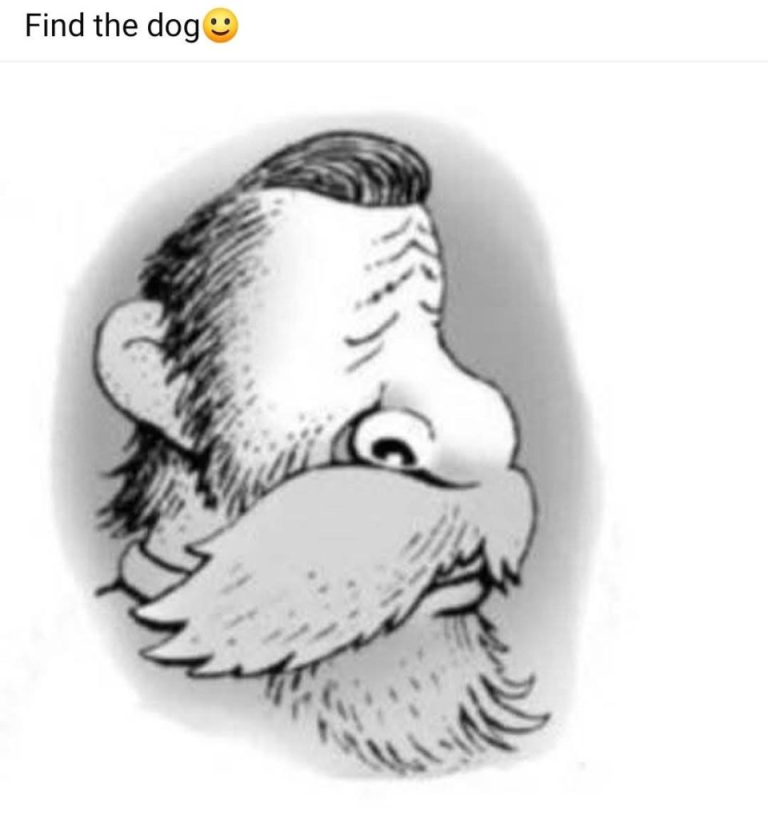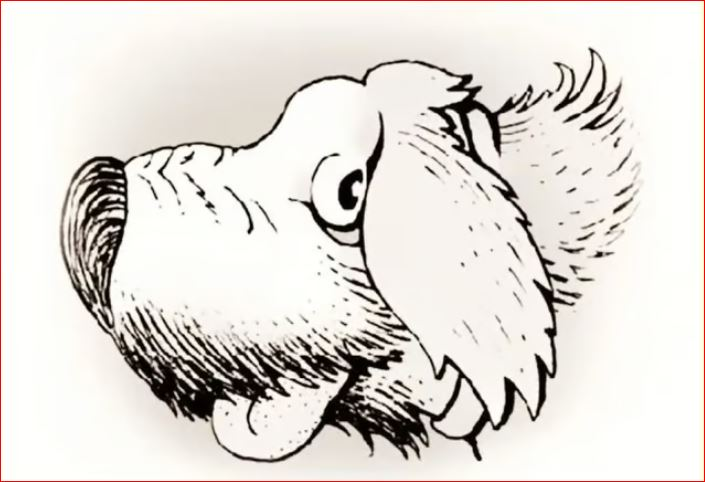Uncover the Hidden Hound: Mastering the Art of Dog Spotting in Optical Illusions
Why We Love Finding Dogs in Optical Illusions
Have you ever stared at a drawing of a bearded man and suddenly realized a playful pup is staring right back at you? That rush of delight when your brain clicks into overdrive—“There it is!”—is why optical illusions featuring hidden dogs have captivated puzzle lovers for decades. Not only do these clever images challenge our perception, but they also sharpen our visual acuity and reward patience. In this article, we’ll dive deep into the psychology behind hidden-dog illusions, reveal step‐by‐step strategies to spot that elusive canine, explore the artistic techniques that make them possible, and offer tips for creating your own mind-bending dog puzzles.

The Psychology Behind Pareidolia and Hidden Dogs
Before you hunt for paws and ears, it helps to understand why your mind loves this game:
- Pareidolia Explained: Our brains are wired to recognize familiar patterns—especially faces and animals—in random or abstract shapes. This evolutionary skill helped our ancestors spot predators and prey in the wild.
- Reward Circuitry: When you finally see the hidden dog, dopamine floods your system, giving you a satisfying “aha” moment that feels almost addictive.
- Attention to Detail: Scanning for small shapes trains your visual cortex to pick out subtle cues—a useful skill for design, photography, and everyday observation.
- Stress Relief: Focusing on a gentle puzzle like “Find the Dog” provides a calming break from daily worries, replacing stress with playful intrigue.
Knowing these mental hacks not only fuels your curiosity but also boosts your motivation to hunt down that dog silhouette.
Breaking Down the “Bearded Man” Illusion
Let’s examine the famous illustration where a scruffy gentleman’s profile masks a hidden pup:
- Primary Subject: At first glance, your eyes lock onto the man’s prominent brow ridge, drooping mustache, and weathered cheek—complete with etched lines of his wizened expression.
- Camouflaged Canine: Tucked within the bushy mustache and beard, subtle curves form an ear, muzzle, and snout. The man’s lower lip doubles as the dog’s chest, while his goatee suggests furry paws.
- Dual Lines and Shadows: The artist uses thick, continuous lines for the man’s face, then mirrors those shapes in miniature—adjusted for scale—to craft the dog, blending shadows so the pup remains invisible until you know where to look.
- Negative Space Magic: The blank space around the man’s profile frames the hidden canine, inviting your eye to trace contours until the dog silhouette emerges.
By dissecting these creative tricks, you’ll be primed to spot the hidden dog faster—and appreciate the artist’s clever design.

Step-by-Step Guide to Spotting the Hidden Dog
Ready to zero in on that dog? Follow these simple steps:
- Relax Your Gaze: Don’t stare directly at the center. Allow your eyes to roam around the man’s moustache and beard area.
- Scan for Symmetry: Dogs in these illusions often appear in symmetrical patches—look for matching curves or mirrored lines within the facial hair.
- Trace Contours: Lightly move your fingertip or pencil along the beard’s outline, searching for small loops or bumps that break the man’s larger shapes.
- Shift Perspective: Step back or squint to blur details; larger shapes coalesce into a recognizable dog profile when you soften your focus.
- Spot Key Features: Identify the dog’s ear first—it often stands out as a pointed shape against the beard’s fluff. From there, other elements fall into place.
With these tactics, you’ll enjoy that triumphant moment when the hidden pet pops into view.

Creating Your Own Hidden-Dog Illusions
Feeling inspired? Try your hand at designing a canine camouflage:
- Choose a Base Subject: Start with a bold silhouette—a human face, tree, or geometric shape.
- Map the Dog Silhouette: Sketch a small dog outline that fits naturally into the base shape’s negative space—pay attention to scale and orientation.
- Mirror and Merge Lines: Blend the dog’s outline with the surrounding structure—shared lines deepen the concealment.
- Adjust Shading: Use soft cross-hatching to blur boundaries between figures, then sharpen key edges to reveal the pup once discovered.
- Test on Fresh Eyes: Show your draft to friends—if they can’t spot the dog in under a minute, you’ve struck the perfect balance of challenge and clarity.
Through practice, you’ll master the art of hidden-dog illusions and delight others with your playful creations.

Beyond Fun: Educational and Creative Benefits
Hunting for hidden dogs isn’t just a pastime—it’s a powerful learning tool:
- Enhances Visual Literacy: Developing the ability to interpret complex images lays the groundwork for graphic design, architecture, and art appreciation.
- Boosts Cognitive Flexibility: Switching between dual interpretations (man vs. dog) strengthens mental agility and problem-solving skills.
- Ignites Creativity: Exposure to illusion art inspires fresh ideas for storytelling, illustration, and even marketing campaigns that leverage visual surprises.
- Encourages Mindfulness: The focused attention required mirrors meditation practices—quieting the mind and anchoring you in the present moment.
By integrating hidden-dog puzzles into classrooms, studios, or family game nights, you transform simple fun into meaningful skill building.

Conclusion: Celebrate the Thrill of Discovery
From ancient cave paintings that hinted at animal spirits to today’s intricate line-drawn riddles, hidden-dog optical illusions remind us of the joyful surprises that lie just beneath the surface of everyday sights. Armed with an understanding of pareidolia, a methodical scanning approach, and perhaps a few artist’s tips of your own, you’ll uncover that cheeky canine in no time—and maybe even design new puzzles to challenge friends. So next time you see a whimsical sketch of a bearded man, don’t stop at the obvious—lean in, roam your gaze, and let your brain’s detective instinct lead you to that hidden dog. Happy hunting!





